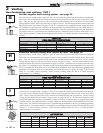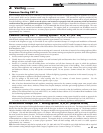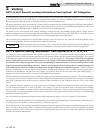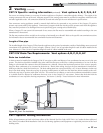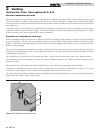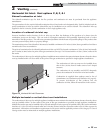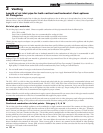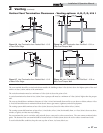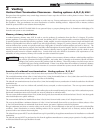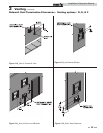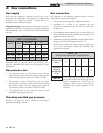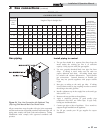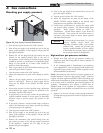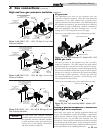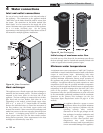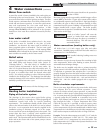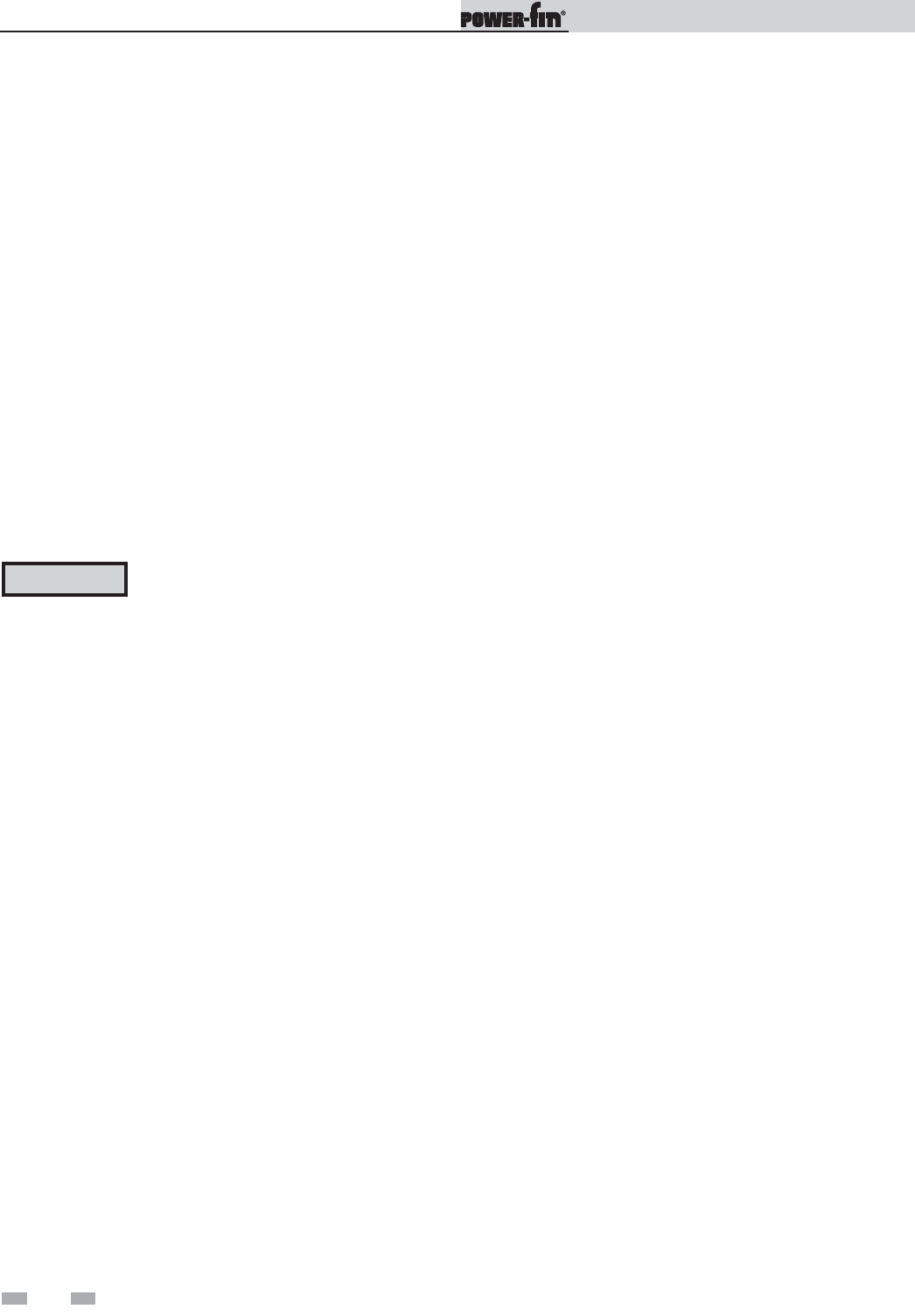
Installation & Operation Manual
28
2 Venting
Vertical Vent Termination Clearances - Venting options: A, B, C, G, H & I
Flue gases from this appliance may contain large amounts of water vapor that will form a white plume in winter. Plume could
obstruct window view.
Flue gas condensate can freeze on exterior surfaces or on the vent cap. Frozen condensate on the vent cap can result in a blocked
flue condition. Flue gas condensate can cause discoloration of exterior building surfaces. Adjacent brick or masonry surfaces
should be protected with a rust resistant sheet metal plate.
The manufacturer shall NOT be held liable for any personal injury or property damage due to ice formation or dislodging of ice
from the vent system or vent termination.
Masonry chimney installations
A standard masonry chimney must NOT be used to vent the products of combustion from the flue of a Category IV, positive
pressure appliance. If a masonry chimney is to be used, the chimney MUST use a sealed, metallic, corrosion resistant liner system
to vent flue products from this high efficiency appliance. Sealed, metallic, corrosion resistant liner systems (single-wall, double-wall,
flexible or rigid metallic lines) must be rated for use with a high efficiency, Category IV, positive pressure vent system. Corrosion
resistant chimney liner systems are typically made from a high grade of corrosion resistant stainless steel such as AL29-4C. The
corrosion resistant liner must be properly sized and fully sealed throughout the entire length if the flue is contained within the
masonry chimney. Both the top and the bottom of the masonry chimney must be capped and sealed to provide a dead air space
around the sealed corrosion resistant metallic liner. Consult with local code officials to determine code requirements or the
advisability of using a masonry chimney with a sealed corrosion resistant liner system.
ƽ CAUTION
Venting of a high efficiency Category IV appliance into a masonry chimney without a sealed stainless steel liner
can result in operational and safety problems. Any breaks, leaks, or damage to the masonry flue/tile will allow
spillage of the positive pressure flue products from the chimney. These flue products can easily escape into an
occupied living space causing a health hazard. If there is any doubt about the condition of a masonry chimney,
or its acceptability for use after insertion of a corrosion resistant liner system, consult with local code officials.
Location of a sidewall vent termination - Venting options: D, E, & F
The vent cap shall terminate at least 3 feet (0.91m) above any forced air inlet within 10 feet (3.05m).
The vent shall terminate at least 4 feet (1.22m) below, 4 feet (1.22m) horizontally from or 1 foot (0.30m) above and 2 feet (0.60m)
horizontally from any door, window, or gravity air inlet to the building.
The sidewall vent termination must be at least 8 feet (2.4m) horizontally from any combustion air intake located above the sidewall
termination cap.
Do not terminate the vent in a window well, stairwell, alcove, courtyard, or other recessed area. The vent cap cannot terminate
below grade.
The vent shall not terminate directly above a public walkway due to the normal formation of water vapor in the combustion process.
Horizontal terminations must not be located over areas of pedestrian or vehicular traffic.
The vent system shall terminate at least 1 foot (0.30m) above grade, above normal snow levels and at least 7 feet (2.13m) above grade
when located adjacent to public walkways.
The vent terminal shall not be installed closer than 3 feet (0.91m) from an inside corner of an L-shaped structure.
The vent cap should have a minimum clearance of 4 feet (1.22m) horizontally from and in no case above or below, unless a 4 foot
(1.22m) horizontal distance is maintained from electric meters, gas meters, regulators, and relief equipment.
Flue gas condensate can freeze on exterior walls or on the vent cap. Frozen condensate on the vent cap can result in a blocked flue
condition. Some discoloration to exterior building surfaces can be expected. Adjacent brick or masonry surfaces should be
protected with a rust resistant sheet metal plate.
The sidewall vent system MUST use the sidewall vent cap kit provided by the appliance manufacturer for installation on a sidewall
termination.
The sidewall vent cap MUST be purchased as a kit from the appliance manufacturer to ensure proper operation. Locally purchased
or fabricated sidewall vent caps should not be used.



